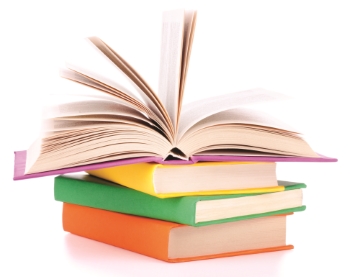What's on the Shelf?
Wednesday, August 23, 2017
Do the books you read with your children contain themes relevant to their environment?
There’s a lot to be said about the benefits of reading with children and research from the Center on the Developing Child – Harvard University shows that a vocabulary-rich environment in the early years makes a lifelong difference for educational opportunities. The research states that differences in the size of children’s vocabulary first appear at 18 months of age. By the time Children reach school, those who are engaged in a language-rich environment develop a vocabulary 2 to 3 times larger than those who are not.
But it’s not just reading with your child that is important – the content should also be relevant to your child’s environment. There are a number of well written, interesting and imaginative books out there that children love, which is great, but it is equally important that there is a balance of content that contains relevant themes your child can relate to. A recent study I carried out on the relevance of content in children’s books, found that there were a number of key aspects of everyday life and diversity, lacking. The research highlighted a strong gender imbalance in the books examined where male characters (human or animal) and occupations seemed to dominate. On closer examination, it became evident that a vast majority of children’s books in the study portrayed characters as animals rather than people and there were a limited number of books set in Australia or involving stories around modern Australian life.
Reading books containing relevant content that children can link back to everyday situations - that they are familiar with, can aid in their social development and dealing with feelings, build self-esteem and provide them with a sense of belonging. But how do you choose books that provide a balance between imagination and everyday life? Some key suggestions to consider when choosing books for your children may be:
- Read the book cover to cover paying attention to the words and illustrations
- Choose books that are well written with a good storyline
- Choose books that are respectful and inclusive of aspects of diversity such as cultural and linguistic diversity, gender roles and people of all ages and abilities
- Choose books that are written for children; be cautious about comments or illustrations that may contain a different meaning for adults
- Look at the roles of female and male characters; check that girls are as active in the plot as boys.
- If inanimate objects have been ascribed a gender, are there some male and female characters?
- Think about the role of animals in the books, if they are portrayed as if they were human (for example: speaking, wearing clothes, living in a house), are the female characters being as active as the male characters, and are gender role stereotypes being challenged?
- What occupations and activities are being portrayed?
- Think about a young child’s perception of themselves as a growing person with interests in different areas, does the book match their interests?
- Are children portrayed being involved in real activities in their home and community? For example, working around the house/garden, going ‘to work’ with a parent, helping with the shopping, caring for pets, being with extended family.
- Do the books show families like yours and families like those of the child(ren) who will be reading the book?
- Are there families who reflect your community in terms of their ethnicity, age, physical ability, employment, relationships?
- Are Indigenous Australians presented in a contemporary way?
And, finally, consider it an ongoing goal that over time you can build a collection that ticks all the boxes, rather than expecting to find a library of individual titles that cover all of the areas above.
MAKING YOUR OWN BOOKS
One way of having fun with books is to make your own books.
This activity can be as simple or as complex as you wish. You could make a book using very basic craft – some cardboard (could be re-cycled) some curtain rings, a hole punch, glue, photos, children’s artwork, or simply place children’s artworks into plastic sleeves and create a title page for a ring binder. Of course the possibilities of utilising the wonders of technology are endless. One of the best-loved books I have seen was a homemade catalogue of lawnmowers, made by a family with their child who was very keen on them.
Book making is an activity that you could share at Playgroup or at home over a number of weeks. As with any published book, it’s important to include the publication details, name of author(s), illustrator(s) and the date the book was created. You can go more “up market” by publishing and selling the book, perhaps this could be an annual fundraiser for your Playgroup. There are many printers who offer online book publishing
By Cathi Tucker BEd(EC)(Hons),BA Flin
This article was originally published in State of Play, Issue Two, September 2016

